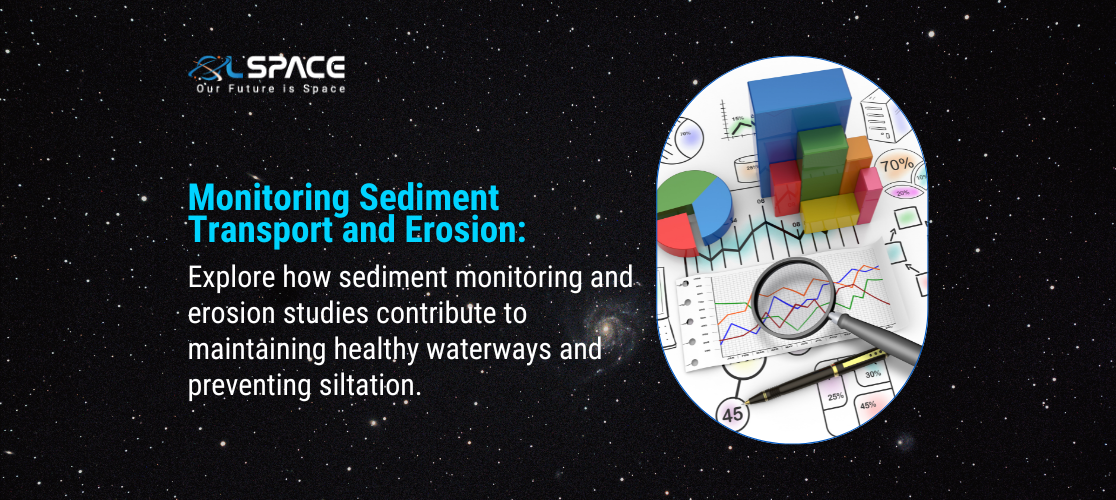26 September 2023
Monitoring Sediment Transport and Erosion: Explore how sediment monitoring and erosion studies contribute to maintaining healthy waterways and preventing siltation.

Sediment transport and erosion studies play a vital role in maintaining the health and sustainability of waterways, rivers, lakes, and coastal areas. Sediment, comprised of soil, sand, and other particulate matter, is a natural component of aquatic environments. However, excessive sedimentation due to erosion can have detrimental effects on aquatic ecosystems, water quality, and infrastructure. Understanding and monitoring sediment transport and erosion are essential for effective management and conservation efforts. Here, we explore how sediment monitoring and erosion studies contribute to preserving healthy waterways and preventing siltation.
1. Protecting Aquatic Ecosystems: Excessive sedimentation can smother aquatic habitats, disrupting the life cycles of fish, invertebrates, and plants. Sediment monitoring helps identify areas at risk and informs conservation strategies to protect these ecosystems.
2. Maintaining Water Quality: Sediment can carry pollutants like heavy metals, pesticides, and nutrients into water bodies, degrading water quality. Monitoring sediment allows for the assessment of pollutant levels and the development of mitigation measures.
3. Preventing Siltation: Siltation occurs when sediment settles and accumulates in water bodies, causing shallowing and reduced water flow. Regular monitoring helps identify areas prone to siltation, enabling proactive management to prevent it.
4. Assessing Erosion Sources: Sediment studies help pinpoint the sources of erosion, which can include construction sites, agricultural areas, and riverbanks. Identifying these sources is crucial for implementing erosion control measures.
5. Infrastructure Protection: Sediment deposition can damage infrastructure such as dams, reservoirs, and bridges. Monitoring sediment transport provides data for designing infrastructure resilient to sediment-related challenges.
6. Coastal Zone Management: Coastal erosion is a significant concern due to rising sea levels and climate change. Sediment monitoring assists in understanding erosion patterns and planning coastal protection measures.
7. Restoration Projects: Sediment data informs the planning and success assessment of habitat restoration projects. By tracking sediment dynamics, restoration efforts can be tailored to mimic natural processes.
8. Flood Prediction and Management: Sediment transport affects river flow and can impact flood events. Monitoring sediment is essential for flood prediction and effective flood management strategies.
9. Sediment Transport Models: Advanced models and simulations, often powered by computer algorithms, help predict sediment transport patterns under various conditions. These models aid in decision-making and planning.
10. Data-Driven Decision-Making: Sediment monitoring provides data that supports evidence-based decision-making in water resource management, ensuring that policies and actions are well-informed.
11. Conservation Planning: By understanding sediment dynamics, conservationists can identify critical areas for protection and prioritise conservation efforts to maintain biodiversity.
12. Climate Change Adaptation: As climate change accelerates, sediment transport patterns may change. Monitoring helps communities adapt to these changes and mitigate risks.
13. Public Awareness: Sediment monitoring can raise public awareness of the importance of sediment control and erosion prevention, fostering community engagement and participation.
In conclusion, sediment transport and erosion studies are essential tools for safeguarding waterways and preventing siltation. By monitoring and understanding sediment dynamics, communities and organisations can take proactive measures to protect aquatic ecosystems, maintain water quality, and ensure the long-term sustainability of our precious water resources. These efforts are not only vital for environmental conservation but also for the well-being and resilience of human communities that rely on healthy waterways.
